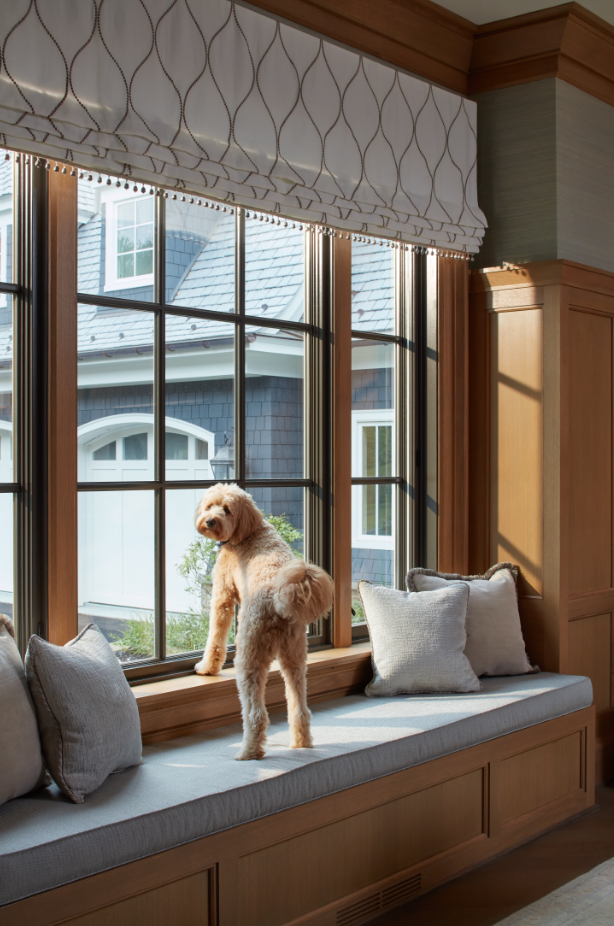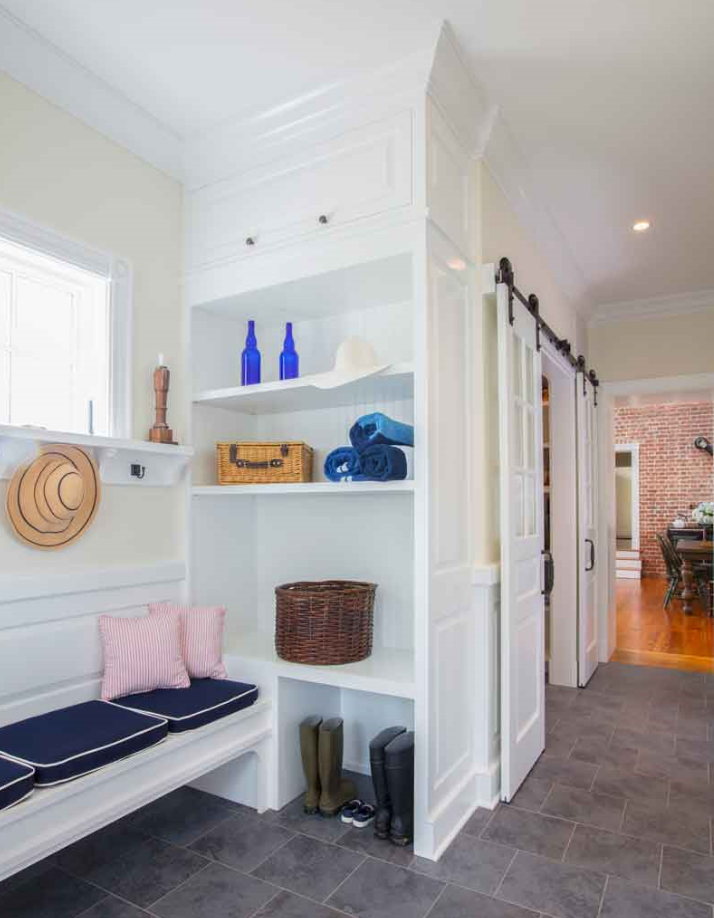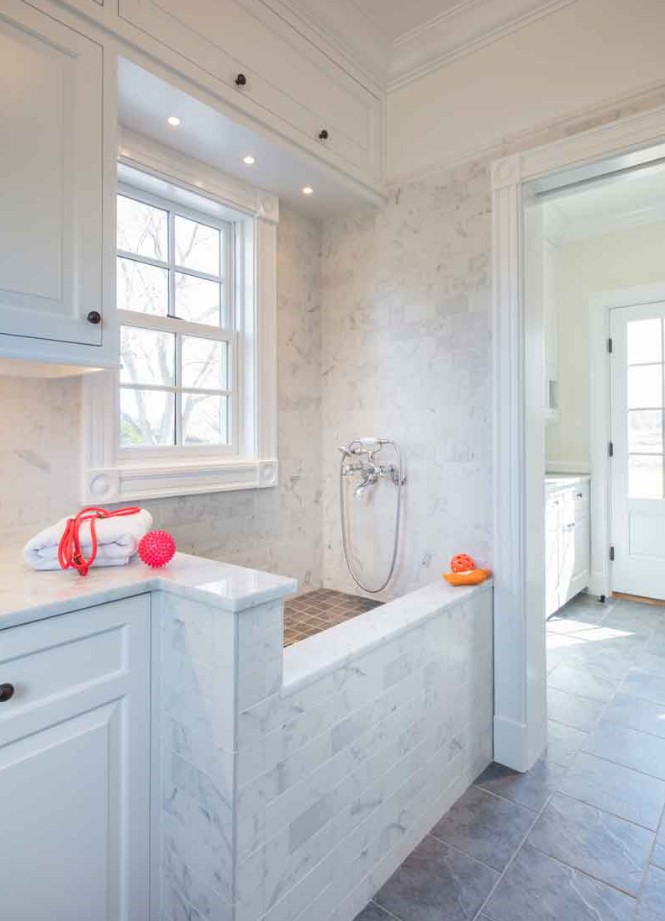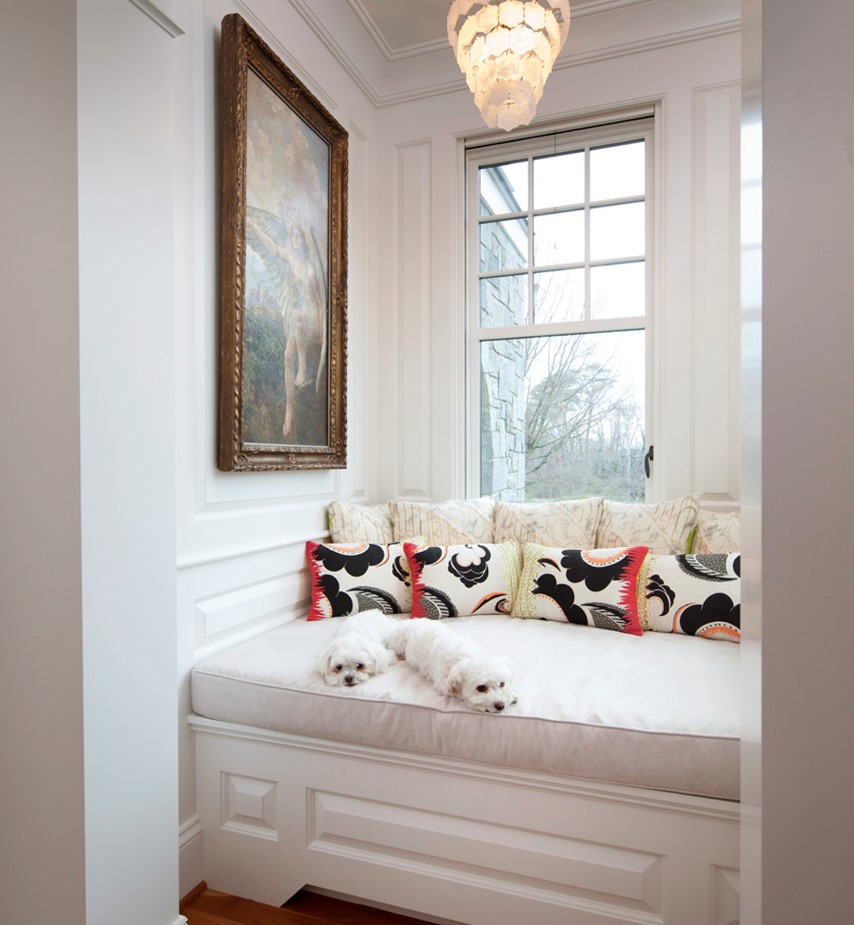Four-Legged Design Trends
For many of us, dogs are much more than pets – they’re full-fledged, four-legged, furry family members. After welcoming a dog into your life, it can be hard to imagine arriving home without a wet nose and wagging tail greeting you at the door. But even the most dog-friendly homeowner recognizes that loving our canine companions can bring design challenges. Fortunately, skilled design can provide creative solutions, many of which will be appreciated by the two-legged residents as well!
Maybe the most difficult choice to make when bringing dogs into the home is the selection of flooring material. Dogs’ claws can be damaging to wood floors, particularly if the dog is a larger breed. Softer woods like pine are not advisable for a canine-inclusive household, however beautiful they may be. If more dense wood species are used, such as oak or walnut, damage to the wood itself can be minimized. Also, selecting the cut of the wood carefully will help: rift-and-quarter cut wood exposes less of the soft wood grain to the surface of the floor than plainsawn lumber of the same species.
Carpet can be subject to stains, but it can also help reduce wear on high-impact areas like stairs. A runner installed over wood treads can keep scratches from forming on a staircase. Ceramic, porcelain, and stone tiles are excellent choices for durable, cleanable, flooring materials in spaces where dogs spend their time. They also resist water damage if your dog, like mine, tends to walk away from the water bowl before swallowing. Grout in natural stone tile floors should always be sealed to reduce staining, although some very light colors may still show discoloration as time passes.


A great design solution is to designate an area of the home to house most of the dog’s needs in one location. This could include a spot for food and drink bowls; a kennel or crate if desired or a dog bed if not; storage for food and other supplies; a dog washing station; and a way to contain your pup while you’re away or company is visiting. Often, all of these functions can be combined with another favorite feature: the mudroom.
Making the mudroom a dog-friendly zone makes sense for many reasons. Dogs are often muddy or wet when they come inside, particularly at waterfront properties. Having an entrance with water-resistant floors provides a chance to get inside and cleaned up before tracking mud throughout the rest of the house. Cabinets and cubbies can store towels, leashes, food, and other dog supplies. In some cases, a linked series of spaces can provide an entrance, storage, and even laundry and dog-washing facilities in the same area, while still keeping the mess under control and out of sight.
A dedicated dog wash is another often-requested feature. This is essentially a dedicated dog shower, with the surface elevated above the floor high enough that the owner can comfortably wash the dog while standing. Tile wall and floor finishes and glass partitions can help contain splashing, and a handheld nozzle makes it easy to wash and rinse. Placed near a washer and dryer, this setup makes light work out of keeping a dog clean.


Many owners, however much they love their canine companions, still require a way to isolate their dog to a particular area from time to time. A great option for all but the largest (or most athletic!) dogs is a Dutch door. Closing the bottom contains the dog, without the sometimes-unsightly appearance of a temporary pet gate. Built-in gates are also available, which can either slide into a wall like a pocket door or lift up out of the way to be concealed in a door jamb.
While living with dogs can bring some specific needs and obstacles, it’s also true that both humans and canines like many of the same things: a place to come inside and get cleaned up after a day at the beach or in the woods; a comfortable spot to eat and drink; and a cozy space to sit and relax. Built-in benches and window seats can provide a charming spot for a comfortable moment’s rest and relaxation, whether you arrive on two legs or four. In the end, you may find that your pet’s favorite spot in the house is the same as yours.
Written by Alan Cook, LEED AP, Studio Director
Since 2014, Alan Cook has brought his passion, leadership, and expertise to Purple Cherry Architects. With a deep understanding of environmental design, coupled with over twenty years’ experience, Alan brings to each project a valuable interdisciplinary perspective. A graduate of Syracuse University School of Architecture, Alan has extensive experience with custom residential, historic preservation, adaptive reuse and commercial projects. He notes, “My passion for architecture is fueled by the fulfilling aspects of problem-solving combined with the delight of helping clients create homes of remarkable beauty and functionality.” Outside the office, Alan serves on the board of Girls on The Run Greater Chesapeake.
